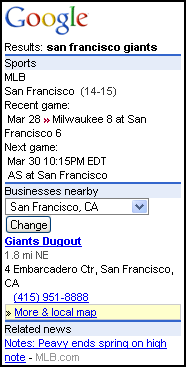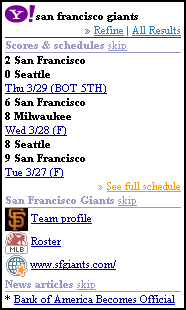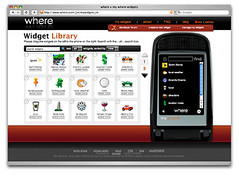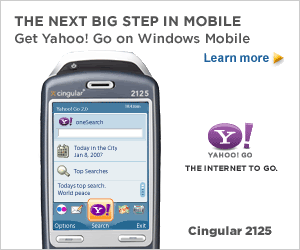Nokia Search Engine?
That’s right, Nokia seems to be working on it’s own visual search engine. At least that’s what its patent application called “Semantic visual search engine” is telling us.

Nokia Visual Search Engine comprises three related processes: learning, categorizing and searching:
When analyzing the images, at first they are converted into a plurality of candidate low-level features (like shape, color and texture strength) and these features are extracted locally around salient points of the image.
Then a supervised learning approach is used to select prominent low-level features from the plurality of candidate low-level features. The prominent low-level features are associated with predefined object categories, that describe generic objects (e.g., cars, planes, etc.); parts of a person’s body (e.g., faces), geographical landmarks (e.g., mountains, trees. etc.), or other items.
When a new item is to be categorized, the target item is converted into a plurality of multi-scale local features and then each local feature is matched with the prominent low-level features using a probabilistic model. So, if the target item has a face, then this feature will be matched accordingly to the other items having a face and the item will be categorized.
The user can search for images by entering keywords, keywords and template images or just image templates without keywords. Items that are similar to the input item are then provided to the user in response to the inquiry.
I am no visual search engine algorithm expert, so I’m not sure if the claims in the patent are new, unique or very useful. But the fact, that Nokia is working in this direction at all, sounds pretty interesting.

And some quips in the patent provide hints that Nokia may have much bigger ambitions for it’s search engine, then just searching for images inside of your cellphone
“…it should be noted that, although “images” are explicitly discussed herein, the present invention can also be applied to non-image content such as audio files...” - general media search engine for audio and video files as well?
“…it should be noted that the search results can also comprise results of a search performed locally and/or at a remote location, and the items being searched can be located locally and/or remotely…This invention can also be implemented in hardware and used in consumer devices….” - sounds like a general Web visual search engine for mobile devices.
Are we looking at the great Google vs Nokia showdown somewhere in 2010?
source: Unwired View
 It looks like Google has come up with an answer to Yahoo's oneSearch (
It looks like Google has come up with an answer to Yahoo's oneSearch ( results for queries. The old Google mobile search offers a choice of searching the full web or the mobile web. The new version mixes mobile and web results together - although you will be hard pressed to find the mobile ones. There are many more web than mobile results and the mobile ones don't receive any priority, in fact they tend to be buried, often not appearing in the first screen of results at all. Google seems to think that users prefer transcoded copies of full web pages over pages designed for mobile. I don't agree. Google's transcoder is one of the best - but transcoded pages remain harder to navigate and less attractive than good mobile specific ones. This change is bad for the future of the mobile web too, Google's mobile search drives the majority of traffic to mobile sites. This de-emphasis of mobile results will cause that traffic to drop drastically I fear. oneSearch is much better in this regard with a separate category for mobile sites on the first screen of results and a More mobile web.. link that leads to pages of nothing but mobile web results.
results for queries. The old Google mobile search offers a choice of searching the full web or the mobile web. The new version mixes mobile and web results together - although you will be hard pressed to find the mobile ones. There are many more web than mobile results and the mobile ones don't receive any priority, in fact they tend to be buried, often not appearing in the first screen of results at all. Google seems to think that users prefer transcoded copies of full web pages over pages designed for mobile. I don't agree. Google's transcoder is one of the best - but transcoded pages remain harder to navigate and less attractive than good mobile specific ones. This change is bad for the future of the mobile web too, Google's mobile search drives the majority of traffic to mobile sites. This de-emphasis of mobile results will cause that traffic to drop drastically I fear. oneSearch is much better in this regard with a separate category for mobile sites on the first screen of results and a More mobile web.. link that leads to pages of nothing but mobile web results.






 GLUON
GLUON






